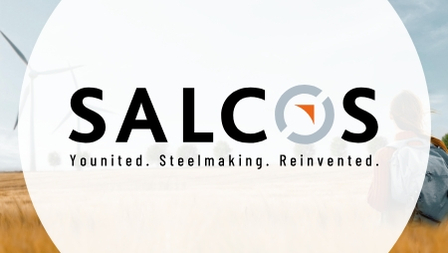Manganese-boron steels
11.04.2018 | Salzgitter Flachstahl GmbH
The manganese-boron steels are boron-alloyed quenched and tempered steels. In addition to good formability in the delivery condition, these steels feature especially high strength, dimensional stability, and wear resistance following the heat treatment. They have a relatively low portion of carbon and manganese and low portions of boron.
While previously, these grades were typically utilized for agricultural machinery construction, these steels have meanwhile also established themselves for applications in precision steel tubes and press-hardened steels in the automotive sector. After heating to more than 900° C (1650° F) and accelerated cooling, it is possible to achieve extremely high tensile strengths.
The application areas for the Mn B types in precision steel tubes is very extensive and diverse. For example, the material can be found in hydraulic cylinder tubes, diesel injection tubes, axle tubes, and stabilizers. The development and manufacture of seamless, welded, drawn precision tubes rolled to size are a key competence of the sister company Mannesmann Precision Tubes GmbH (MPT).
The press-hardening of manganese-boron steels enables the manufacture of lightweight components, for example, for the automotive industry. This material concept is meanwhile also encountered in a very wide range of products as a substitute for diverse case-hardened and quenched and tempered steels in accordance with EN 10132. The strengths that can be achieved with the MnB types allow a reduction in the carbon content and consequently a significant improvement in weldability compared to this steel group.
Two methods are employed in press hardening: indirect and direct. In the indirect procedure, the material is given the required shape by means of classic cold forming, then austenitized and hardened in a form hardening tool. This allows the manufacture of complex components in short cycle times. The direct procedure is more widespread. In this case, the material is austenitized and then formed and hardened in a cooled die. In this method, it is possible to perform partial heating that allows custom tailored characteristics along the component geometry.

The basis for the press-hardening and precision tubes is formed by the grades 20, 30 and 38MnB5 which are standardized in EN 10083-3, as well as 27MnCrB5-2. This basis makes it possible to coordinate a very wide range of manganese-boron analyses with the Salzgitter Flachstahl Technical Customer Services. These analyses are individually tailored to the customer's wishes and requirements. At Salzgitter Flachstahl, roughly two dozen different manganese-boron steel analyses with carbon contents from 0.10 % (10MnB5) to 0.40 % (40MnB5) are currently available as part of our normal program.
If you have any questions, please contact your customer representative in Sales or the Technical Customer Services.









